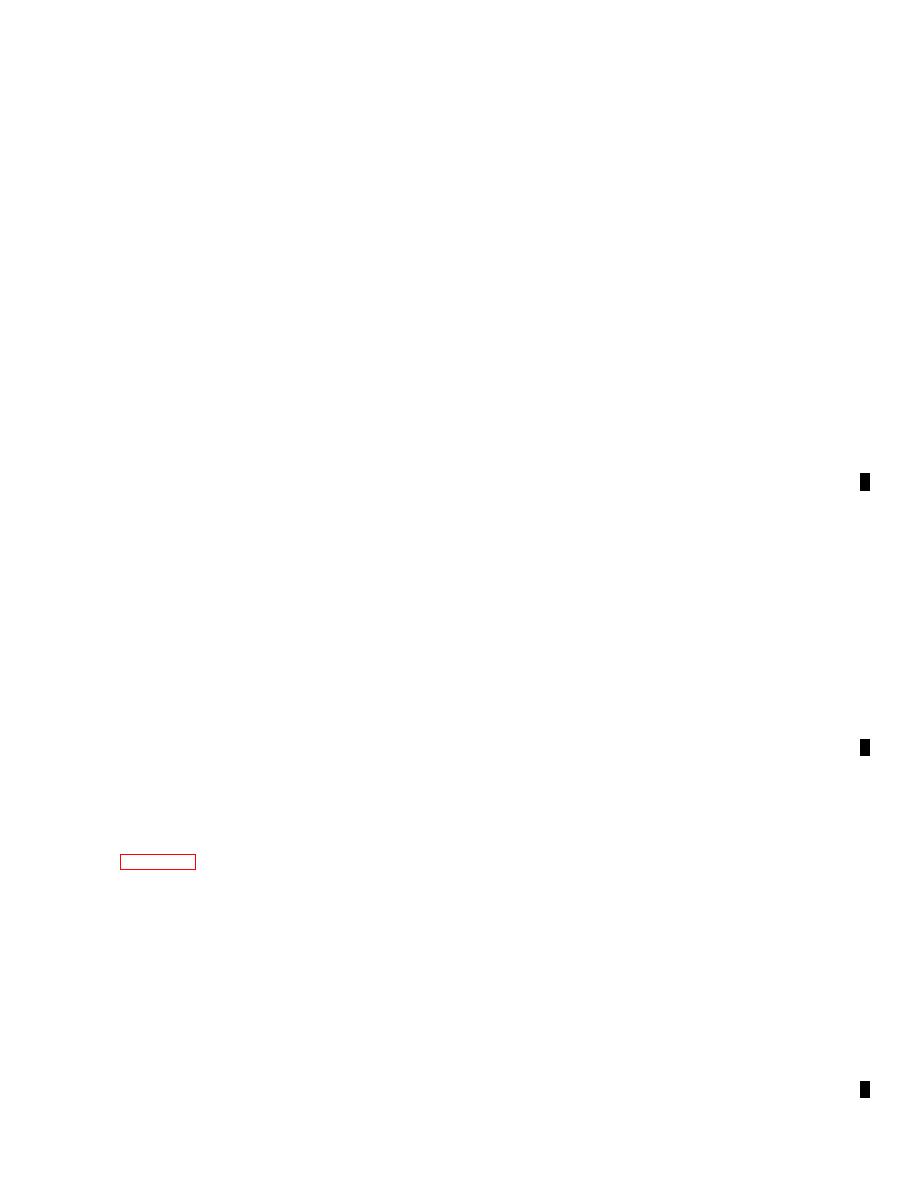
| Tweet |

Custom Search
|
|

|
||
 TM 5-1940-277-20
TM 1940-20/2
Section V. MAINTENANCE PROCEDURES
2-6. GENERAL.This section covers general information for disassembly, cleaning, inspection, repair and
assembly for component parts of bridge erection boat. Specific instructions for individual component
maintenance are covered in the appropriate sections.
2-7. DISASSEMBLY. It is recommended that groups of related parts be kept together, preferably in a tray,
to prevent their being lost. For those components which have too many or too large parts to use trays
it is recommended that the parts be tagged with their names as they are disassembled. This will make
it easier to identify parts when assembling the components. Precision matched or mated parts will be
marked to ensure reassembly in the proper position and place.
2-8. CLEANING. All parts except bearings are to be cleaned as specified in TM 9-247. Bearings should be
cleaned as specified in TM 9-214.
2-9. INSPECTION.
a.
General. The importance of carefully inspecting disassembled parts cannot be stressed enough.
Reassembly of substandard or defective parts can result in needless troubleshooting, disassembly
and inspection. Inspection procedures must be performed by experienced personnel using proper
tools and equipment. All measuring and testing equipment must be checked periodically and
when required accurately calibrated in accordance with current directives. The compilation of
complete and accurate inspection records as specified in DA Pam 750-8 is a necessary part of all
inspection actions.
b.
Metallic Parts. The following procedures should be followed when inspecting metallic parts.
(1)
All parts should be inspected for cracks.
(2)
Inspect gear teeth retaining ring grooves and mating surfaces for burrs.
(3)
Mating and polished surfaces should be inspected for nicks, scratches and rust. Any nick,
scratch, or rust is cause for rejection.
(4)
Sheet metal parts should be inspected for bends, cracks, tears, broken corners or defective
welds.
c.
Non-metallic Parts. Non-metallic parts such as seals and gaskets are not subject to inspection.
They will be disposed of upon removal and replaced by new items during assembly.
2-10. REPAIR.
a. Hull parts that are cracked may be repaired by welding if it does not distort or impair the
strength of the part. Welding procedures will be accomplished as specified in TC 9-237.
b. A fine file or hone may be used to remove small burrs from gear teeth, retaining ring grooves and
mating surfaces. The burrs must be very minor and if on gears only on the engaging edge of the
teeth.
c. Damaged painted surfaces should be repainted as soon as possible to prevent corrosion.
2-11. ASSEMBLY. Step-by-step procedures for assembly of bridge boat components are provided in
a. The housing contact surface of oil seals should be coated with a non-hardenting sealer to prevent
leaks. The lips should be coated with grease (GAA).
b. All pressing operations should be accomplished using a suitable press and adapters unless
otherwise specified.
c. Metallic parts should be lubricated with the lubricant utilized in the component during operation.
d. Critical torque values are specified in the assembly procedures.
e. Silicone sealant is used on gaskets and mating surfaces in the engine assembly.
|
||
 |
||